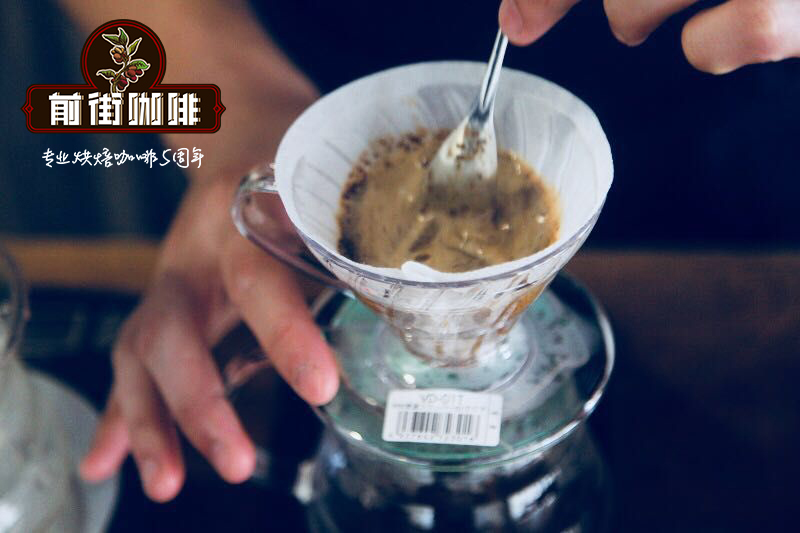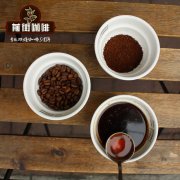What does it mean to be a native species of coffee in Ethiopia's Sidama Guji region?

The Sidamoguji area along the Mora Mora River in southern Ethiopia produces "forest coffee" or wild coffee trees. There are also many small coffee farms in the region, which gather coffee in cooperatives for grinding and export. The typical variety in Guji area is a family heirloom. What is important to us is that it is not a modern variety, but a traditional coffee, very similar to the coffee that was first grown there. Processed by the Ch'Ire Ameli cleaning station of Guji Fengtu Nensebo woreda. More than seven hundred small farmers took cherries to Ch'Ire Ameli, where they made impressive choices and used traditional elevated beds for excellent sun processing of Ethiopian native species. Why is it called a common name? It is estimated that there are about 60,000 varieties of coffee in Ethiopia. Because of this large number, genetic tests have not yet been conducted to allow buyers to distinguish between varieties. Due to cross-pollination that occurs naturally in the natural environment, the name "Ethiopian native species" exists as an easy-to-understand word to describe the situation. However, this does make Ethiopians a mystery, which is an interesting mystery, because each village or town may have a different breed and have very unique characteristics. Ethiopia is the birthplace of coffee, which means it was naturally found here! The drying process seems simple: pick the fruit and put it in the sun until it changes from red to brown to the near end, and then peel it from the dry thick skin to reveal the green beans step by step. This is a method suitable for dry areas, where sunlight and heat dry the seeds in the dry, intact pericarp. Because of its simplicity and because the fruit remains intact, it is often called "natural coffee", a bit like drying grapes into raisins. Since minimal investment is required, dry processing defaults to producing cheap commodity-grade coffee in areas where fruits and seeds can be dried in the right climate. But this is a failure in wet areas. If the drying process is not fast enough, the fruit will degrade, rot or mildew. Dried coffee can also be very inconsistent. If you want a clean, sweet, full-bodied cup, DP will be more laborious than wet. Even the most cautious pickers pick green immature or semi-ripe coffee from the branches when picking red ripe cherries. If it is not removed on the first day of drying, the green turns brown, making it difficult to distinguish it from ripe fruit.
Important Notice :
前街咖啡 FrontStreet Coffee has moved to new addredd:
FrontStreet Coffee Address: 315,Donghua East Road,GuangZhou
Tel:020 38364473
- Prev

Do you understand the "Golden Cup Rule"? how to flexibly adjust the ratio of powder to water when making coffee?
SCA identified seven basic elements of coffee extraction, and in my experience, one of the most basic elements is the most neglected. In fact, this is actually the first decision that people usually make when making coffee, whether they realize it or not. Of course, the variable is the ratio of coffee to water. Whether you are a barista or a coffee lover, when you buy Hario V60 or French pressure
- Next

What's the difference between iced coffee and cold coffee? how to make iced coffee will take you to know the common iced coffee.
Iced coffee never gets hotter, but crowded markets often lead to product confusion, and someone seems to need a degree in coffee studies from the University of California, Davis (UC Davis) to browse all the iced coffee options in these markets. Although we certainly won't tell anyone how to enjoy coffee here, before you give an unsolicited speech from an avid barista
Related
- Detailed explanation of Jadeite planting Land in Panamanian Jadeite Manor introduction to the grading system of Jadeite competitive bidding, Red bid, Green bid and Rose Summer
- Story of Coffee planting in Brenka region of Costa Rica Stonehenge Manor anaerobic heavy honey treatment of flavor mouth
- What's on the barrel of Blue Mountain Coffee beans?
- Can American coffee also pull flowers? How to use hot American style to pull out a good-looking pattern?
- Can you make a cold extract with coffee beans? What is the right proportion for cold-extracted coffee formula?
- Indonesian PWN Gold Mandrine Coffee Origin Features Flavor How to Chong? Mandolin coffee is American.
- A brief introduction to the flavor characteristics of Brazilian yellow bourbon coffee beans
- What is the effect of different water quality on the flavor of cold-extracted coffee? What kind of water is best for brewing coffee?
- Why do you think of Rose Summer whenever you mention Panamanian coffee?
- Introduction to the characteristics of authentic blue mountain coffee bean producing areas? What is the CIB Coffee Authority in Jamaica?

